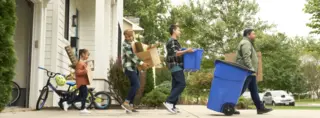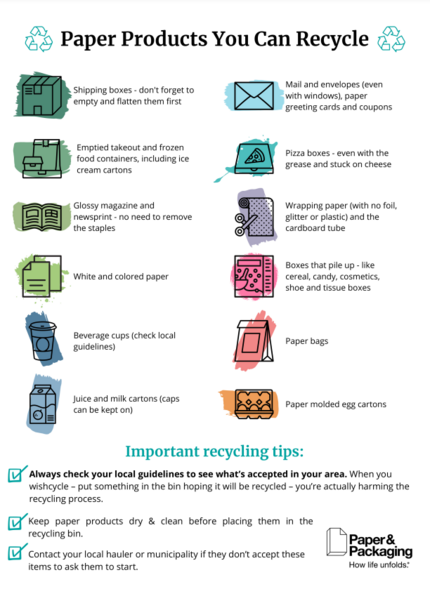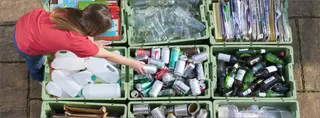
Chances are, you’ve heard the pop psychology theory that it takes about a month—21 days, specifically—to form a habit.
While the length of time required varies in reality, depending on person and circumstance, what’s consistent is the necessity of repeating the desired action regularly: putting your recyclable paper products in a recycling bin rather than dumping them in the garbage, for instance.
If that’s proving easier said than done and developing or improving recycling habits isn’t going as quickly or smoothly as you’d like, there are simple ways to tilt the odds in your favor.
Read More: Innovations in Paper and Packaging Create More Chances to Choose Sustainable, Recyclable Products
Expert behavioral scientist and researcher Dr. Wendy Wood has created tips that anyone can use to make recycling an automatic part of their daily routine and feel good about what they’re doing.
Feeling good about recycling is key, in fact. It constitutes an emotional reward, which is one of the keys to forming a habit.
The upshot is that improving your recycling habits will give you the confidence that comes from knowing you’re living a more sustainable lifestyle.
More than 60% of Americans want to recycle more, and now is a perfect time to start. Here are nine easy tips to make recycling easier and more rewarding year-round:
- Avoid throwing recyclables in the trash. When recyclables go into the trash, they become environmental waste. They can’t be reused or repurposed.
- Start with recycling what is easiest, like paper, as habits build on each other. Recyclers with a strong habit of recycling paper also had habits of recycling cardboard and paper packaging.
- Keep a recycling bin at home. While this sounds like common sense, you’re twice more likely to recycle if you have a bin at home than if you don’t. This is the power of small changes!
- Have more than one bin in your home. Recyclers who have two or three bins in their homes have strong recycling habits! Having more than one bin is convenient and serves as a reminder of where to put waste. You don’t have to walk to another room or floor, and it also helps prevent having an overflowing bin.
- Place your recycling bin in an easy location within the home. Opting for a location close to where you generate recyclable material—like the kitchen and main bathroom— can simplify the process.
- Ensure that everyone in the household pitches in. Create accountability for everyone. Households where everyone is responsible for recycling show a 15% increase in recycling habits over households that don’t.
- Post a list or printout of materials that can be recycled in a visible place. Having an easy guide to recycling can make a huge difference. Having clear cues reduces decision making—making it easier to recycle correctly and avoiding wishcycling.
- Opt-in for curbside pickup—if it’s convenient and available in your area. This is the ultimate hack to make it easy—without curbside pickup, recyclers have to store their material somewhere until they are able to drive it to a drop-off point.
- The easiest recommendation of all? Recycle cardboard boxes by emptying and flattening them.
Opting for paper products makes recycling easy, and paper can be recycled up to seven times when disposed of properly. A key to living sustainably is being diligent about habitually recycling. Start slow and ease your way into adopting recycling habits, and soon enough, you’ll be a recycling regular!




